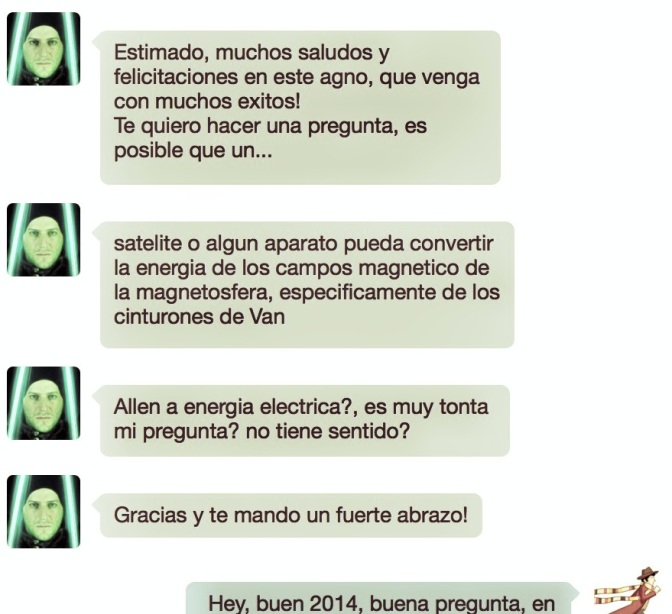Les he comentado que tengo un amigo que trabaja en Londres y que se dedica a la Mecánica quantica, materia ultra fría, óptica no lineal y física computacional??? mucho no? pues el otro día le hice nuevamente otra pregunta y le dedico tiempo para exponerme el tema y es asa, léanlo, es muy interesante:

Harvesting magnetic fields...
Harvesting magnetic fields…
Now, to the Van Allen radiation belt: the belt is part of the Earth’s magnetosphere. Ok, ok… The magnetosphere is the part of space near a celestial object in which charged particles are controlled by the magnetic field generated by the object itself. So the Van Allen belts extend from an altitude of about 1,000 to 60,000 kilometers above the surface in which region radiation levels vary. In order to convert magnetic energy to electrical, as mentioned above, we requiere the magnetic field to be in movement or vary. It is generally accepted that in that context, the Earth is effectively a permanent magnet and thus to generate electric power from that, you have to move electric conductors (wires) thought the field in the right direction and with the right orientation of the conductor. Not an easy task…However, one can perhaps take advantage of the variations of the magnetic field. In Nature 439, 799-801 (16 February 2006) it has been reported that
“… Earth’s magnetic field is weak: it varies from about 25 microtesla (Using the very crude approximation that there are variations of 1nT per second, and take a circular area of with radius of 1 metre we would end up with a voltage ofT) at the Equator to 75
T at the poles, with geomagnetic field lines inclined, in Europe and North America, at an angle of about 60° to the (horizontal) surface. The field is not constant: currents in the ionosphere and disturbances from Earth’s interior produce slow daily variations in the field with amplitudes of some 25 nanotesla (nT), and superimposed on these are further oscillations with periods of a few seconds and amplitudes of about 1 nT.”


No hay comentarios.:
Publicar un comentario